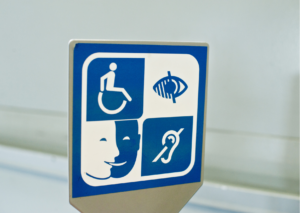The Canadian government went to great lengths to help people with disabilities in whatever ways they can, thus The Disability Tax Credit was created.
Living with a disability, whether mental or physical, can have a significant impact on your day-to-day life, particularly in terms of finances. Disabled taxpayers frequently incur inescapable additional costs that others do not, and these costs can quickly pile up. Canadians with disabilities are eligible for special tax credits and deductions to help offset these additional expenditures.
But what are these tax benefits, and how can you claim them when it’s time to file your taxes?
The Disability tax credit (DTC) is a non-refundable tax credit that reduces the taxes owed by Canadians with severe and prolonged physical or mental impairments.
Importance of Disability Tax Credit
It’s one of the most significant credits for people living with disabilities since it allows you to claim a federal maximum of $8,576 plus an additional supplement of up to $5,003 for those under the age of 18 (for 2020), as well as other federal, provincial, and territorial programs. These include the disability component of the Canada workers benefit and the child disability benefit.
It also allows you to participate in the Registered Disability Savings Plan (RDSP). This tax-free savings plan is meant to help you plan for someone who qualifies for the DTC’s long-term financial security. There is no longer a time limit on how long a beneficiary’s RDSP will remain open if they become ineligible for the DTC beyond 2020.
You can claim the corresponding provincial/territorial tax credit if you qualify for the federal DTC. You can request an adjustment for up to ten years if you didn’t claim these on earlier returns.
You must have a medical practitioner complete Form T2201, Disability Tax Credit Certificate, verifying that you have an impairment and explaining its effects on your life to qualify for the DTC.
Remember that you can claim the DTC amounts for yourself or a disabled dependent. If you don’t need the entire credit to zero out your tax liability, you can give it to your spouse, common-law partner, or another dependent.
Disability Medical Expenses
You can also claim medical expenses for some medications, equipment, and treatments in addition to the DTC. This covers costs for a service animal, accessible computer software, renovations to your home or car to make it more accessible, and sign-language interpretation services.
You may also be eligible for the refundable medical expense credit if you have a low income and substantial medical expenses.
GST/HST
Some products and services are exempt from service or sales taxes. Hospital parking, medical devices, home-delivered meals, and specially adapted motor vehicles are all examples of this.
If you paid tax in error, you can always request a refund or credit from the supplier. If they don’t provide you a refund, you’ll have to file a rebate application with the CRA using Form GST189, General Application for GST/HST Rebate.
The Home Buyer’s Plan
You may need to buy or construct a home that meets your needs. The Home Buyers’ Plan (HBP) is available to assist with these fees. This program allows you to take up to $35,000 from your registered retirement savings plans (RRSPs) to buy or construct a suitable home for yourself or a disabled relative. To participate in the Home Buyers Plan, you must be a first-time homeowner. This need, however, is waived for those with disabilities.
You can withdraw from multiple RRSPs under the HBP as long as you’re the account owner and a first-time house buyer.
Although living with a disability has its difficulties, keep in mind that there are options available to help you, particularly when it comes to taxes. Connect with us and get the best tax advice tailored for you!





